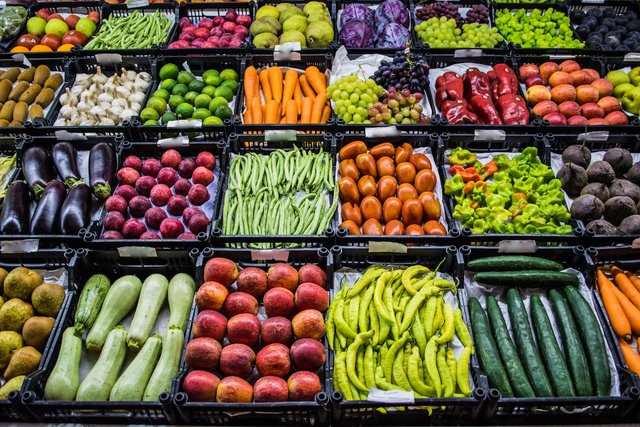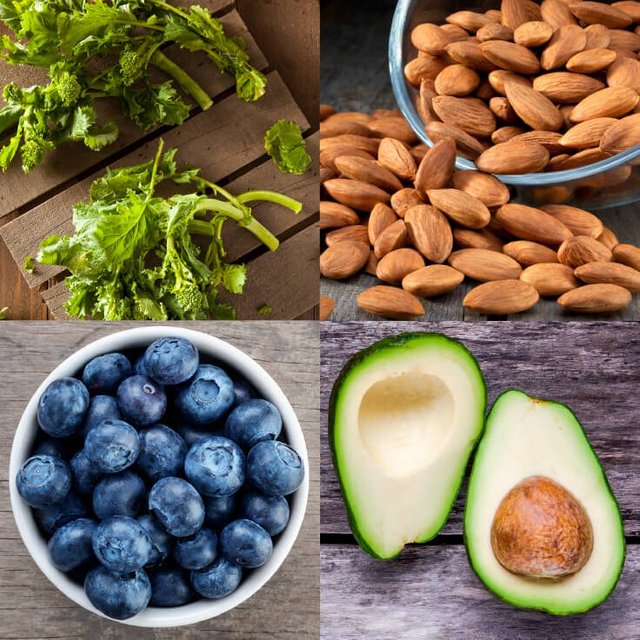The World’s Healthiest Foods’ Quality Rating System Methodology

In order to quantify the nutrient richness of each of the World’s
Healthiest Foods in this e-book, The World’s Healthiest Foods book,
and the WHFoods.org website, a team of top nutritionists and I designed
the World’s Healthiest Foods Quality Rating System (“Rating
System”).
This Rating System qualifies foods as “excellent,” “very good” and
“good” sources of nutrients, providing you with a simple, yet reliable,
way to determine the nutritional attributes of a food. These quality
descriptions don’t just take a food’s nutrient contribution into consideration;
rather, they evaluate this nutrient contribution in relationship
to the amount of calories a food contains. This way you can
evaluate foods in terms of their ability to maximize your intake of
important nutrients without having to exceed your individual caloric
intake goals.
To help you better understand the categorization of foods as “excellent,”
“very good” or “good” sources of a particular nutrient, I want to provide
you with some background as to how these quality ratings were derived.

Rating System Categories
We began with a computerized analysis of the nutritional contents
of the World’s Healthiest Foods using the nutritional analysis software, Food Processor for Windows (ESHA Research, Salem, Oregon,
USA). In other words, we started with a food like carrots, and we
analyzed how much vitamin C, vitamin A, zinc, protein, etc. that
food contained in one commonly eaten serving.
For each food we found the %Daily Value (DV) contribution of each
nutrient, as well as the food serving’s %DV contribution of calories
(for more on DV, see below); the comparison of the two became the
Density, and is the first (and most important) part of the formula to
determine the food’s quality rating. We then picked a simple, threecategory
system for rating all foods: “excellent,” “very good,” and
“good.” The definitions of these rating qualifications are as follows:
Excellent Density>=7.6 And DV>=10% Or DV>=75%
Very Good Density>=3.4 And DV>=5% Or DV>=50%
Good Density>=1.5 And DV>=2.5% Or DV>=25%
In reality, the goal that each individual should strive for in terms of
daily nutrient and caloric intake varies depending upon his or her
personal needs. Yet, to help individuals meet their nutritional needs,
government agencies have created standard recommendations for
intake. The most up-to-date ones in the U.S. are those created by
the Institute of Medicine and are known as the Dietary Reference
Intakes (DRIs). Yet, since these DRIs can have many values for each
nutrient (varying by age, gender and whether a woman is pregnant
or lactating), we chose not to use these as our Daily Value (DV)
standard. Rather, for most nutrients we chose to use the U.S. Food
and Drug Administration’s “Reference Values for Nutrition Labeling”
as our standard for DVs. These are the values used by food manufacturers
in the “Food Facts” portion of their product’s label.

For other nutrients, such as for those where there were no “Reference
Values,” we derived a DV based upon the latest research or opinion
of nutrition science experts. With respect to omega-3 fatty acids, for
example, we adopted the standards set forth in a 1999 workshop
conducted at the National Institutes of Health (NIH). The workshop participants—who included prestigious contributors in the field of
nutrition science including Artemis Simopoulos, MD, Alexander
Leaf, MD, and Norman Salem, Jr., Ph.D—concluded that at least
1.2% of daily calories should come from omega-3 fatty acids, including
1% from alpha-linolenic acid and 0.1% each from EPA (eicosapentaenoic
acid) and DHA (docosahexaenoic acid). When translated
into the context of an 1800-calorie diet, this workshop standard
represented a recommendation of 2.4 grams of omega-3 fatty acids
per day, which we adopted as our food and recipe rating system
standard, given that we use 1,800 calories as the reference diet for the
Rating System. (The 1,800 calories chosen as the reference diet is
based upon the Institute of Medicine’s recommendation for sedentary
women, age 31-50.)
Total Nutrient Richness Chart
Once the density ratings for each food were calculated, I wanted to
create a quantitative way that each food’s density could be compared.
This was the number that was to become the Total Nutrient Richness,
featured on page 41. The number is a reflection of how many “excellent,”
“very good” and “good” ratings a food had. Each “excellent”
was assigned a value of 4, each “very good” a value of “2” and each
“good” a value of 1. These were added together to arrive at the Total
Nutrient Richness score.
!originalworks
The @OriginalWorks BETA V2 bot has upvoted(0.5%) and checked this post!
Some similarity seems to be present here:
http://www.whfoods.com/genpage.php?tname=faq&dbid=22
This is an early BETA version. If you cited this source, then ignore this message! Reply if you feel this is an error.
Hello back atcha

Really good info, resteeming it. Thanks for the info
Thanks @priyanka
@steem-untalented
i'm looking forward to evaluation of individual food/veggies gonna be a long post but i think it'll be good.